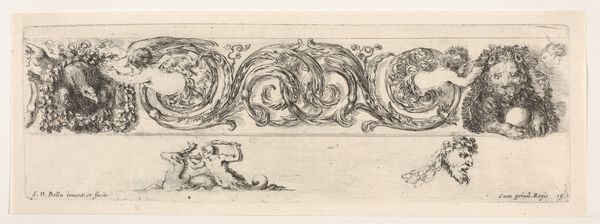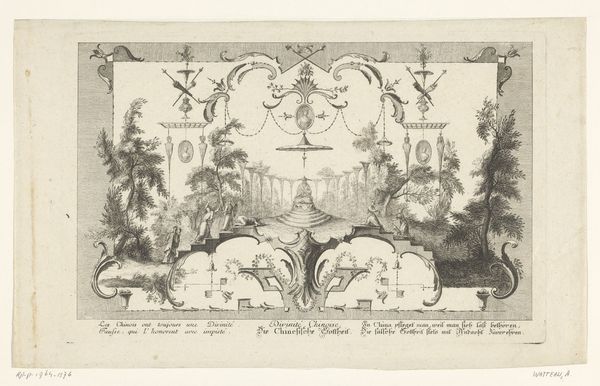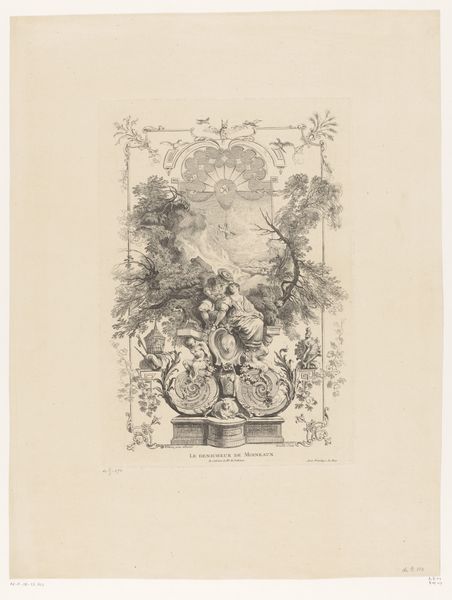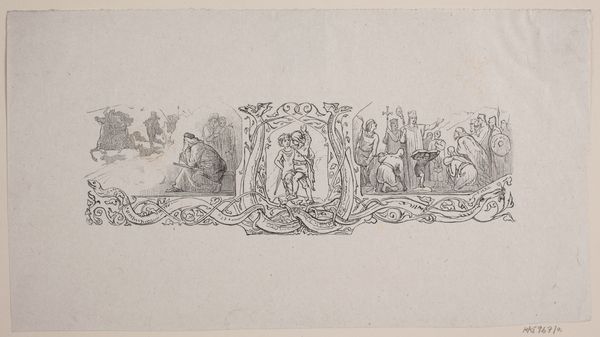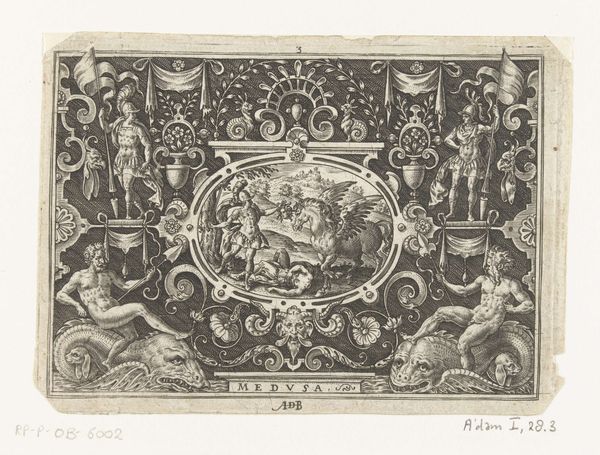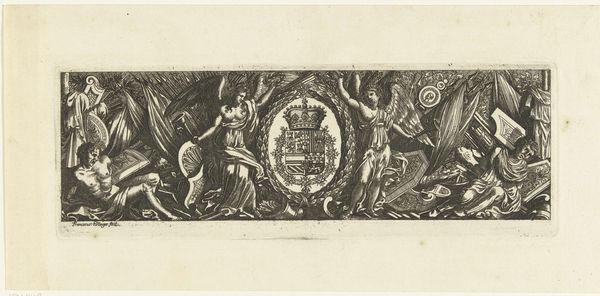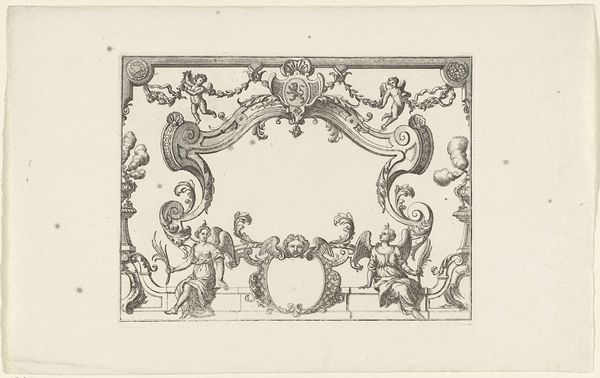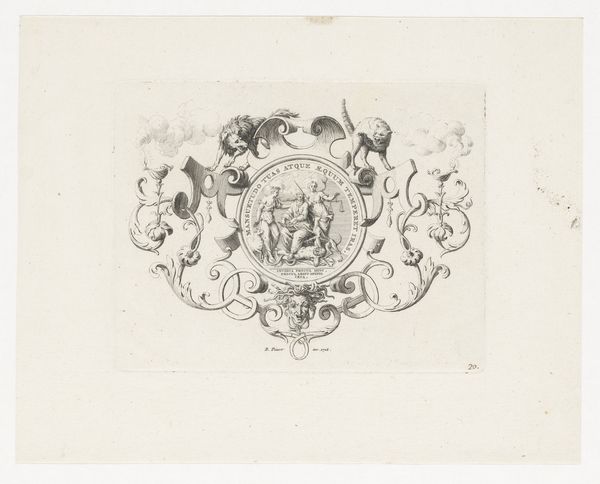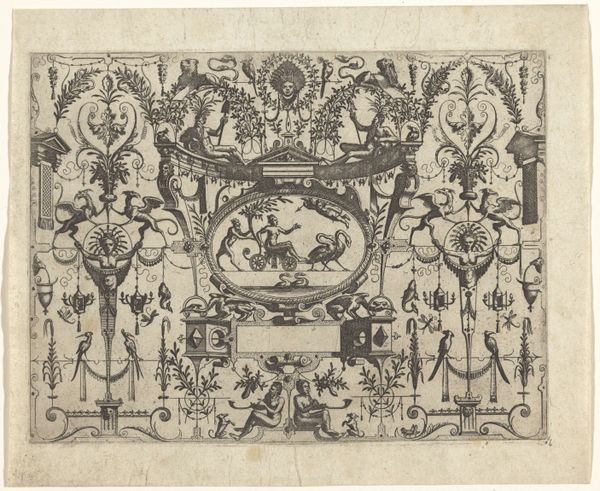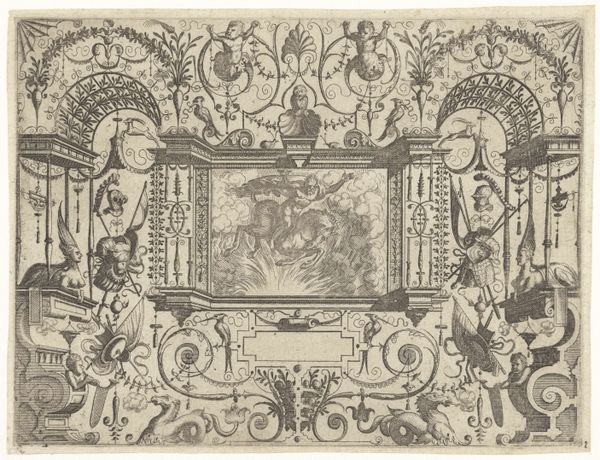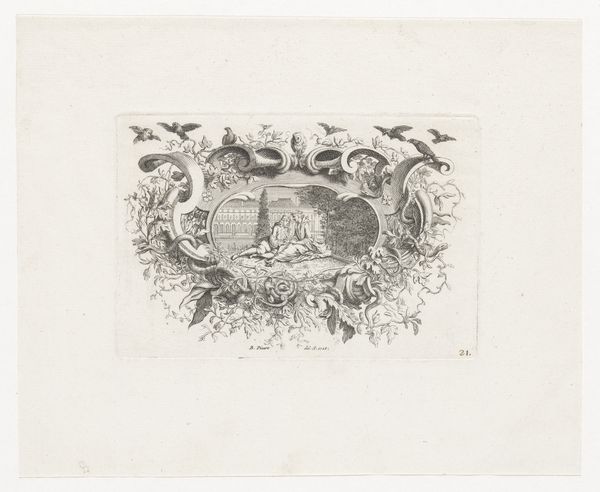
drawing, ornament, etching, paper, engraving
#
drawing
#
ornament
#
allegory
#
baroque
#
pen drawing
#
etching
#
classical-realism
#
figuration
#
paper
#
line
#
decorative-art
#
engraving
Dimensions: height 150 mm, width 212 mm
Copyright: Rijks Museum: Open Domain
Curator: This 18th-century print by Jean-Francois-Antoine Boulanger, titled "Ornament met putti en vazen," offers a delightful example of Baroque design sensibility, rendered in etching. Editor: My first impression? It feels incredibly intricate, like a filigree of swirling lines. The use of etching allows for a high level of detail and texture, though its almost dizzying, isn't it? Curator: The process of creating these ornamental prints involved significant labor, of course. Think about the etcher, meticulously transferring the design onto the copper plate, considering every line's weight and direction, and the subsequent process of mass production to decorate different surfaces. Editor: Absolutely, and the visual vocabulary tells a compelling story. The putti, those chubby cherubs, represent innocence and divine love, common allegorical figures of the time, contrasted by more adult elements and dark tones. Consider where an artwork like this could have been placed; who and what spaces was it supposed to speak to? Curator: This piece exemplifies the Baroque aesthetic of embracing complexity, but consider the materiality itself. The paper, the ink, the copper plate...These readily available components democratized artmaking; making designs accessible beyond the wealthy through cheaper modes of production. It certainly broadens participation with decorative art. Editor: I’d say it highlights social inequalities in art production; there were stringent rules surrounding whose hands could engage in creating visual culture. Ornamentation can communicate luxury and sophistication, as well as gender roles and political positions in a hierarchical setting, like palace interiors. How might people excluded from this level of refinement experience this art? Curator: Fair points. This etching showcases a masterful manipulation of lines that are characteristic of classical realism—a key skill developed through craft and then harnessed for the popular Baroque tastes. But the means of its execution were also critical in understanding its legacy and spread as material culture across different strata of 18th-century society. Editor: Indeed. These detailed prints helped construct certain idealized notions of class, identity, and beauty, prompting viewers to consider their position in these ever-shifting visual narratives. It is an invitation to decode social hierarchies in the art world. Curator: Agreed; the print operates as both an accessible commodity and a reflection of specific period craftsmanship, inviting us to study its own means of making. Editor: Ultimately, exploring these complexities brings a fuller picture of both the era, and the ways its meanings persist today.
Comments
No comments
Be the first to comment and join the conversation on the ultimate creative platform.
